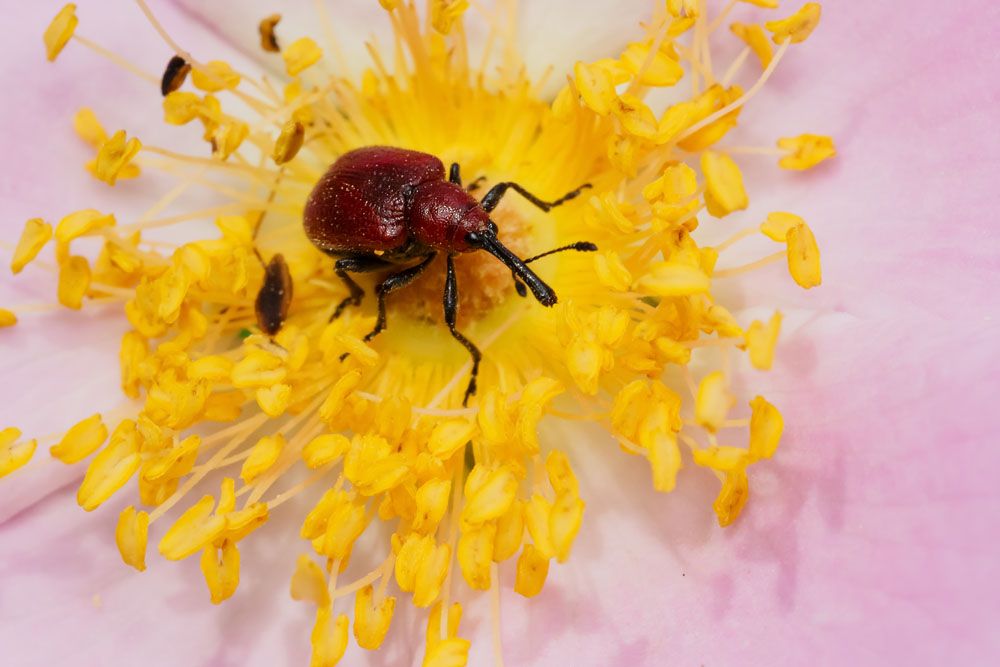
Rose Curculio – Merhynchites bicolor
Rose Curculio: Appearance, Territory, Damage and Life Cycle
Latin Name: Merhynchites Bicolor
Appearance: A native beetle of western North America, it may be found all throughout the continent, although it is most prevalent in the northern states and southern Canada.
Hosts Plants: Rose, especially wild rose. Both the adult and larval stages eat on plant blooms, leaving unique holes in the process. Later stage larvae consume rosehips, and adults may consume young shoots or stems, causing bud droop and eventual death.
Territory: Canada
Damage Insect Cause: Rose curculio weevils are likely to have visited your rose flowers if they have petals that look like Swiss cheese, immature buds that have failed to open and are dried up, or stems that are broken just below the bud. If left unchecked, they will completely destroy your rose flowers!
Keep a watch out for them and the damage they wreak from late May to early June, depending on the weather. These wicked intruders bore into the rose and deposit eggs in the hip or ovary region. The legless white larvae feed on the rose blooms, as well as the reproductive components of the rose bloom, seeds, and petals, as soon as the eggs hatch. Like the Japanese beetle, the larvae then fall to the ground to pupate in the soil throughout the winter. The adult emerges from the ground in late spring and climbs up to feed on the rose buds, resuming the reproductive cycle. Fortunately for us and our roses, each year only produces one generation. A strong infestation of these weevils will completely ruin a rose garden’s flowers. Take action as soon as you notice the presence of rose curculio pests to be efficient in controlling them.
Life History and Habits: Adults and larvae both feed on roses, with the larvae emerging from the rose “hips” that form after the petals fall and the adults and larvae eating on the forming rose buds. The little holes they gnaw into the buds are then visible as rows of uniformly spaced holes in the petals after the bloom opens, adversely affecting the flower’s attractiveness. When blooms are lacking, the adult beetles will feed on the plant’s fragile young shoots as well as sensitive stems. Females drill holes in rose hips to lay their eggs. Each year, there is just one generation.
